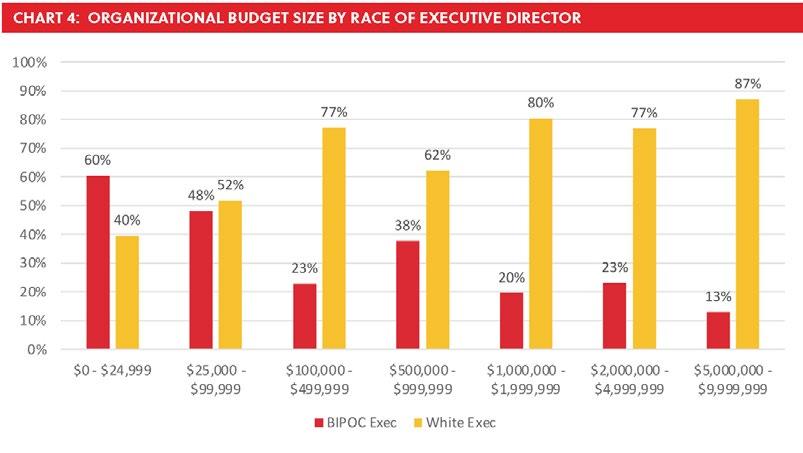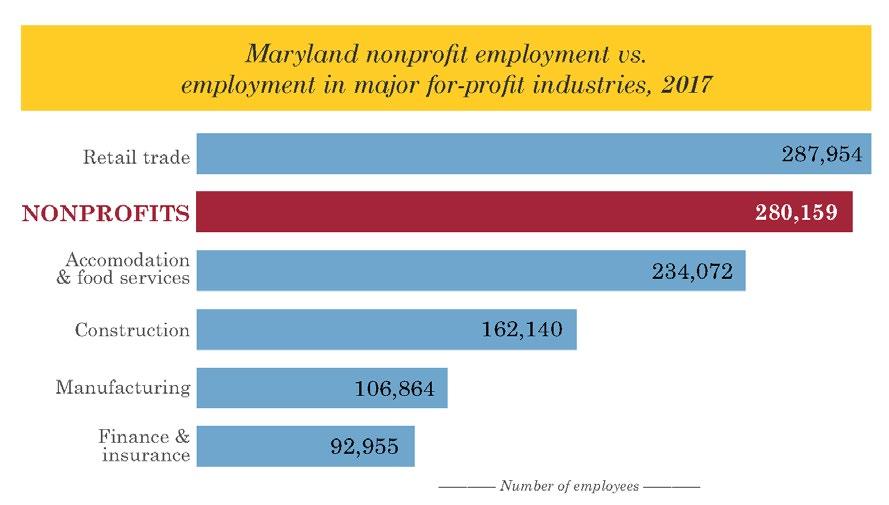
2 minute read
Nonprofits by the Numbers

Our COVID-19 and Racial Equity Survey aimed to uncover issues of racial equity within the nonprofit sector itself. The findings show two nonprofit sectors: one that is far more challenging and inequitably structured for Black, Latino, Asian and Indigenous People leading nonprofit organizations, compared to the nonprofit sector experienced by white leaders.
Advertisement
Organizations led by people of color saw greater declines in resources during COVID-19 and had lower levels of reserves going into the pandemic than white-led organizations. White-led nonprofits were more likely to be larger organizations that were able to pivot and grow by accessing more relief funds during the pandemic.
By sharing this report, we hope Maryland governments and philanthropists will be motivated to re-design funding programs, making programs accessible and intentionally directing funding to community-based and people-of-color-led organizations. Click here to access the full report: https://bit.ly/3Oj3jA4
NONPROFITS BY THE NUMBERS
Maryland Nonprofits by the Numbers analyzed the Internal Revenue Service (IRS) Business Master File and Bureau of Labor Statistics (BLS) Quarterly Census of Employment and Wages (QCEW) to offer insight into Maryland’s nonprofit sector’s size, scope, and growth. Maryland Nonprofits commissioned this study, produced in collaboration with the Johns Hopkins Economic Data Project, to demonstrate the important role of the nonprofit sector as a driver of economic and community development in Maryland, and to empower nonprofits and the communities they serve to advocate for themselves at the local, state, and national levels.
Indeed, the data shows that this vital sector not only contributes directly to the health, safety, and cultural enrichment of the communities it serves but plays a crucial role as a major driver of the state’s economy.
In the latest year for which data are available, Maryland’s 30,880 public-serving nonprofits —including hospitals, universities, daycare centers, nursing homes, social service agencies, museums, theatre companies, environmental organizations, advocacy groups, clinics, and more— generated nearly $60 billion in revenue and supported more than 280,000 jobs, representing nearly 13% of all non-government workers in the state. That’s more workers than the manufacturing, construction, or hotel and restaurant industries employed, and just behind the state’s entire retail sector.
What is more, these nonprofit workers earned nearly $16 billion in wages —well ahead of any other major industry in the state and almost $7 billion more than the state’s largest industry‚ retail trade.












